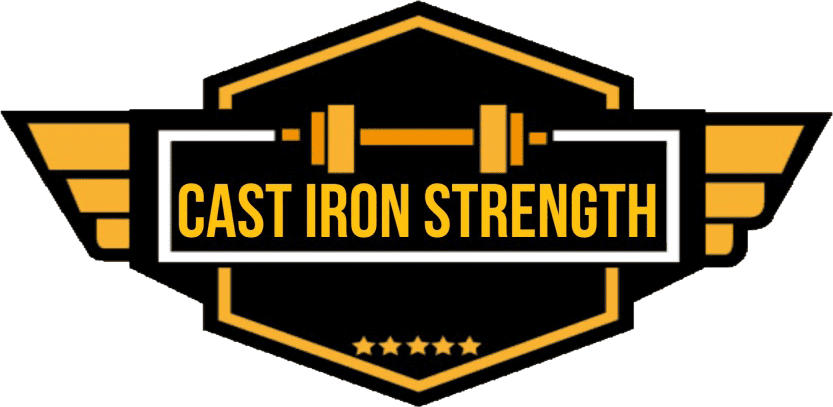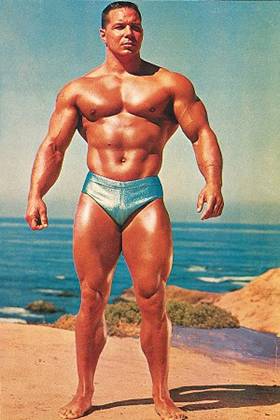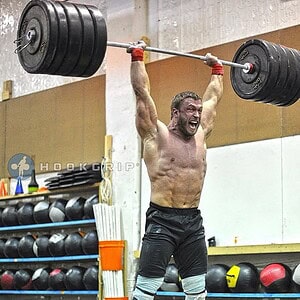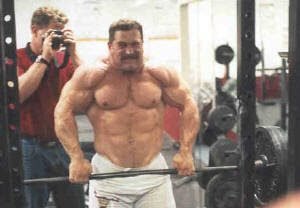INTRODUCTION
If you are coming to Cast Iron Strength to gain some knowledge on how to be Bigger, Faster or Stronger, the likelihood is, you know what a “Bro Split” is. However, if you don’t know the term, the chances are you’ve probably followed a bro split and not even realised. Anyone who has trained in the pursuit has at some point in their lifting career. If they say that haven’t. They’re lying. We all have, there’s no shame in it, it’s just the evolution of training, but the key is to actually progress, and learn from your mistakes.
So, what exactly is a “Bro-Split”? Well, the reason it’s been coined the term “Bro” is because it is usually adopted by the Gym Bros who hit the gym to look good in a T-shirt, or out at the club. What does a typical Bro-Split look like? Well, to simplify things, it’s basically hitting 1-2 muscle groups per day, usually once a week. A Typical 5 Day bro split may look like:
| Monday: Chest and Triceps |
| Tuesday: Back and Biceps |
| Wednesday: Rest Day |
| Thursday: Legs |
| Friday: Shoulders |
| Saturday: Arms |
| Sunday: Rest Day |
Of course, there will be exceptions to this, and everyone will find a way that works for them usually hitting their favourite muscle group to train early in the week and hit their less desired groups at the end of the week (if at all). Does a Bro-Split work? In short, Yes. The bottom line is, it presents the body with a stimulus to change and it will work. For a while. The truth is, anything will work really if you are a novice to an intermediate level trainee.
A lot of people will get away with having reasonably good level of Size, Strength, physique if they follow this style of training.
But you never came to read about getting a reasonably good physique, or relatively strong. So, let’s just put that to rest.
Is there any benefit to a Bro-Split? For a novice trainee? Sure, it gets people in the gym, gives them a decent level of understanding of the body and how to train. It’s just not optimal. Despite what many of the average trainees may tell you, training this way is NOT an optimal way to grow or build strength, period. But why?
Well, to truly understand why this style is not optimal, we must first break down the variables which make up effective programming for muscular hypertrophy (growth) and Strength gains.
VOLUME
On a typical Bro-Split you may hit that muscle for 60 mins plus. In this time, you will accumulate significant volume (Sets X Reps). The problem is, within that session, your level of strength will decrease significantly. This will, therefore, decrease your potential on subsequent exercises. The truth is, most people don’t really understand programming and its impact on the body. They think that going to the gym with all guns blazing and destroying a muscle once a week will end up in optimal growth. No, it won’t.
The Volume of a session should be progressive over time, not just a case of destroy and recover. Doing this only potentially promotes too much damage. Not only will this cause too much pain, meaning subsequent sessions will be less productive, it’s simply not required for growth/strength adaptations. Trainees need to understand that you are trying to promote a stimulus which in turn will promote an adaptation in the body. You do NOT need to destroy muscles to do this. Nothing pisses me off more as a coach that seeing people go out their way to hurt someone in the gym that is just not ready for that level of intensity. Sure, if you’re Phil Heath and you’ve got 20 years of volume loaded training under your Mr Olympia belt then yeah, go kill some heavy volume every session, but beginners/intermediates, that’s just stupid. Even worse, is when so called PTs take pride in bursting clients like it gives them some sort of fucking Hero Badge because their client spewed outside.
Let’s get a few things straight about VOLUME of training:
- Minimum effective dose – do as little as you NEED to, to promote the change you want.
- Increase volume slowly – don’t start with super high volume or you have nowhere to go.
- Pair Volume with Intensity – the 2 of these variables should NOT be trained at the same level all the time – for example when Volume is high, the intensity (load) should not be high all the time. You can go through periods where both are high, but not for extended periods of time or you will burn out or worse, break.
FREQUENCY
Similar to volume, frequency is very misunderstood variable of training. As stated before, a typical Bro-Split might train a body part once a week. Well, to get straight to the point, muscle will recover well before 7 days. That’s the number one reason why you should train a muscle group more than once a week. Simple. The science has stated that most muscles take between 2-3 days to recover therefore the idea that training it once a week is simply flawed from the start. Bigger muscle groups such as the Quads, Pecs, Glutes, Lats, require longer recovery periods and the smaller muscle groups (Biceps, Triceps Calves etc.) will recover a lot quicker.
This variable alone should make you analyse your training program and structure the week in a better format to allow you to work on each muscle with a greater frequency. The bigger muscles can and should be trained more than once a week. I would suggest beginning with 2 x per week to begin. The smaller muscles can be trained even more frequently, up to 3/4 x per week.
More Frequency = More Volume, right? Not exactly. Just because you are hitting more sessions per week does not automatically require you to double or triple your volume on each muscle group. What it does mean is that you need to SPLIT the volume between days.
Let’s say that on a typical Leg Day you hit a huge 20 Sets of legs, by training Legs twice a week, simply half the volume and do 10 sets on legs on each day.
This has multiple benefits:
- Less DOMS (Delayed Onset Muscle Soreness), less pain means you can train harder next session.
- Better Technique – by not frying your muscles, the exercises you do, do will be performed to a better standard, in turn decreasing the risk of injury.
- Technical Mastery – by hitting multiple sessions, you can practice the big compound lifts more often meaning you will become more technically efficient at the big lifts, leading to better strength and size gains long term.
- Better recovery – by allowing a proper recovery, you will grow at a much faster rate than that of a typical bro split.
As stated previously, muscles take between 2-3 days to recover, therefore training once a week means you have a whole 4-5 days of Strength/Size maintenance/atrophy.
Without getting too geeky, let’s look at the science of muscular adaptation. The SRA Principal (Stimulus Recovery Adaptation) demonstrates that when muscles are stimulated, the automatic response is for a DECREASE in fitness (homeostatic disruption), however, recovery will promote an increase in fitness over time. If the stimulus is not repeated at the appropriate time, a decrease will follow. It is therefore imperative to get this frequency right to take advantage of this effect. A Bro-Split- just doesn’t.
Figure 1) SRA (Stimulus Recovery Adaptation Cycle)
PROGRAMMING EXAMPLES
STRENGTH or SIZE? The question of WHICH to follow? Quite simply, programming for Optimal Strength and Optimal Size is DIFFERENT. There is a reason, that the biggest people on the planet are not the strongest, and vice versa. Stop trying to do both. Pick a goal and program specifically for that goal.
Yes, optimal strength requires a degree of muscular hypertrophy (which should be worked on in phases) however, constantly training for growth will not permit you to gain optimal strength. This argument alone is enough for another independent article, however, let us look at a programming example for each.
| Strength (4 Days Per Week) |
| MON: Squat, Accessory Deadlift, Accessory Legs (12 Total Work Sets) |
| TUE: REST |
| WED: Bench Press, Accessory Upper Body (12 Total Work Sets) |
| THU: REST |
| FRI: Deadlift, Accessory Squat, Accessory Legs (10 Total Work Sets) |
| SAT: REST |
| SUN: Military Press, Accessory Upper Body (10 Total Work Sets) |
The above example demonstrates how to train upper body 2 x weekly (22 Work Sets) and lower body 2 x weekly (22 Work Sets).
| Hypertrophy (5 Days Per Week) |
| MON: Squat, Accessory Deadlift, Accessory Legs (12 Total Work Sets) |
| TUE: Bench Press, Accessory Upper Body Push (12 Total Work Sets) |
| WED: Upper Body Pull (12 Total Work Sets) |
| THU: REST |
| FRI: Deadlift, Accessory Squat, Accessory Legs (12 Total Work Sets) |
| SAT: Military Press, Accessory Upper Body (12 Total Work Sets) |
| SUN: REST |
The above example demonstrates how to train upper body 3 x weekly (36 Work Sets) and lower body 2 x weekly (24 Work Sets).
Both of these examples demonstrate how to manipulate the structure of a weekly training cycle to allow multiple SRA Cycles. By training in such a way, you are able to capitalise on the aforementioned benefits. Understand, there are literally millions of combinations to training programs and multiple variables which must be considered including Frequency, Intensity, Volume, Type of Training, Training Age, Experience, Injury and more.
Despite this, it is advisable that you construct a program based on your goal and adjust if and when necessary. Some of the most solid and effective programs ever made are of a very simple structure which take into account higher frequency training. Some of the most reputable coaches in the world have the simplest yet effective training programs. But why don’t they change much? In short, they WORK. Just because your program has 4 different types of calf raise or bicep curl doesn’t mean you will improve quicker. Sometimes less really is more. So, stop complicating shit and go back to basics. One of the greatest of all time powerlifters Ed Coan is famous for following the same basic program for about 25 YEARS. Why? It worked, so why change it. But he kept things basic, and progressed over time.
CONCLUSION
It is 2017. We have come a hell-a long way from Arnold Pumping iron for 3 hours a day in his flip flops and hot pants, with his Bros. The scientific literature (and decades of programming from experienced coaches) has clearly demonstrated a favourable shift towards higher frequency training for a multitude of reasons.
Take Home Points
- Start Small – 3-4 days per week training and increase frequency as and when applicable
- Minimum Effective Dose – keep volume low and build over time
- Master the basics – obvious, I know, but there are plenty trainees doing so called advanced programs but can’t even squat for shit.
- Keep it basic – don’t add complexity when it’s not required
- Keep a Training Log – if you’re not tracking what you’re doing, you’ve fell at hurdle 1
It is clear that when you speak to advanced trainees that they will likely have made all these mistakes, and LEARNT from them. You can learn from their mistakes and avoid making the same ones. Articles like this one and the others at Cast Iron Strength, will help you form the basis of your training knowledge and understanding.
So, if you want to grow optimally, or gain optimal strength, ditch the bro split. You’ll thank me later.
Author Profile
Dean Robertson is an Edinburgh based Personal Trainer and Strength Coach. After completing his MSc in Strength and Conditioning at Edinburgh University he founded Elysium Training Systems ltd. An Edinburgh based coaching business with a team of Personal Trainers that work with a range of clientele from competitive powerlifters, physique competitors, and those looking to improve their general health and wellbeing. In addition to running Elysium Training Systems, he is a competitive powerlifter in both the GBPF and BDFPA.





